Eastern Prickly Pear is a hardy, low-growing cactus native to eastern and central North America, including parts of Ontario. Belonging to the Cactaceae family, this perennial thrives in hot, dry climates and needs full sunlight to flourish-it does not tolerate shade.
In its natural habitat, you’ll often find Eastern Prickly Pear in sandy, rocky areas and coastal scrublands. Its resilience makes it well-suited to regions with well-draining, nutrient-poor soils, particularly in USDA hardiness zones 4 through 9.
| Common name | Eastern Prickly Pear |
| Botanical name | Opuntia humifusa |
| Family | Cactaceae |
| Species | humifus |
| Origin | Eastern and central USA into Ontario |
| Life cycle | Perennial |
| Plant type | Perennial |
| Hardiness zone | 4, 5, 6, 7, 8, 9 |
| Sunlight | Full Sun |
| Maintenance | Low |
| Soil condition | Sand |
| Drainage | Well-Drained |
| Growth rate | Slow |
| Flowering period | Summer |
| Height | 6 in. – 1 ft. 2 in. |
| Width | 6 in. – 1 ft. 2 in. |
| Flower color | Gold, Yellow |
| Leaf color | Green |
| Fruit color | Burgundy, Red |
| Stem color | Green |
| Fruit type | Berry |
| Fruit benefit | Edible |
| Leaf benefit | Edible |
| Flower benefit | Showy |
| Garden style | Drought Tolerant Garden |
| Uses | Coastal |
I. Appearance and Characteristics
Opuntia humifusa, commonly known as the devil’s-tongue, eastern prickly pear or Indian fig, is a cactus of the genus Opuntia present in parts of the eastern United States, Mississippi and northeastern Mexico.
As is the case in other Opuntia species, the green stems of this low-growing perennial cactus are flattened, and are formed of segments. Barbed bristles are found around the surfaces of the segments, and longer spines are sometimes present. The flowers are yellow to gold in color, and are found along the margins of mature segments. The flowers are waxy and sometimes have red centers. They measure 4–6 cm (1+5⁄8–2+3⁄8 in) across. This cactus blooms in the late spring.
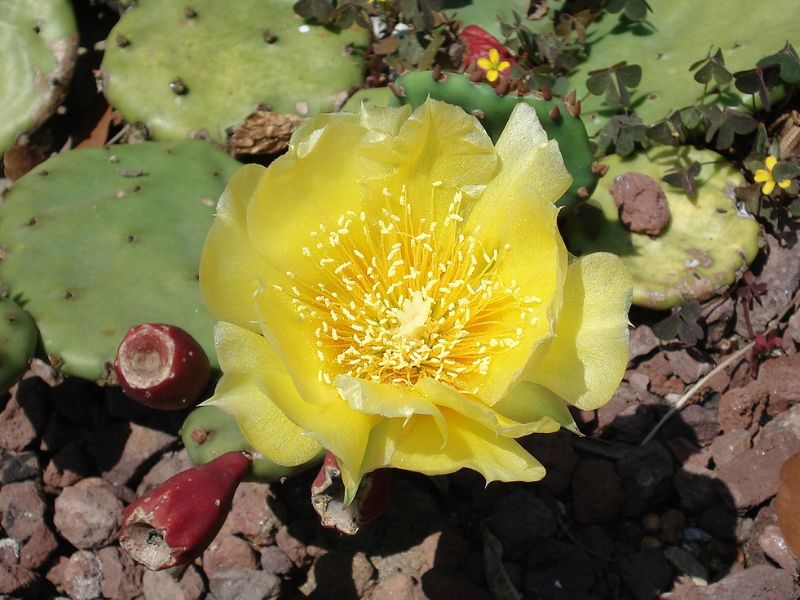
The juicy red or purple fruits measure from 3–5 cm (1+1⁄8–2 in). As the fruit matures, it changes color from green to red, and often remains on the cactus until the following spring. There are 6 to 33 small, flat, light-colored seeds in each fruit.
This plant is very intolerant of shade and instead thrives in sunny, hot and dry environments with well-draining, sandy soil. O. humifusa will grow in open areas in sandy, rocky and coastal scrub habits. It is capable of surviving cool winters unlike many cacti, although harsh winter storms are known to cause habitat loss.
II. How to Grow and Care
Sunlight
As with most cacti, the eastern prickly pear does best in full sun for at least eight hours a day. That being said, it can handle partial shade if it’s planted in hotter climates, like a more traditional desert landscape. More light exposure will also lead to a larger plant and more blooms come mid-to-late spring and summer.
Temperature and Humidity
Like any cactus, the prickly pear likes warm, dry weather. Though it’s more cold-hearty than most other cacti and can survive cold temperatures down to 14 degrees Fahrenheit, it will grow larger (and bloom more) when raised in warm temperatures. Keep in mind, it needs to be kept dry, so any additional humidity (like misting the plant) is unnecessary.
Watering
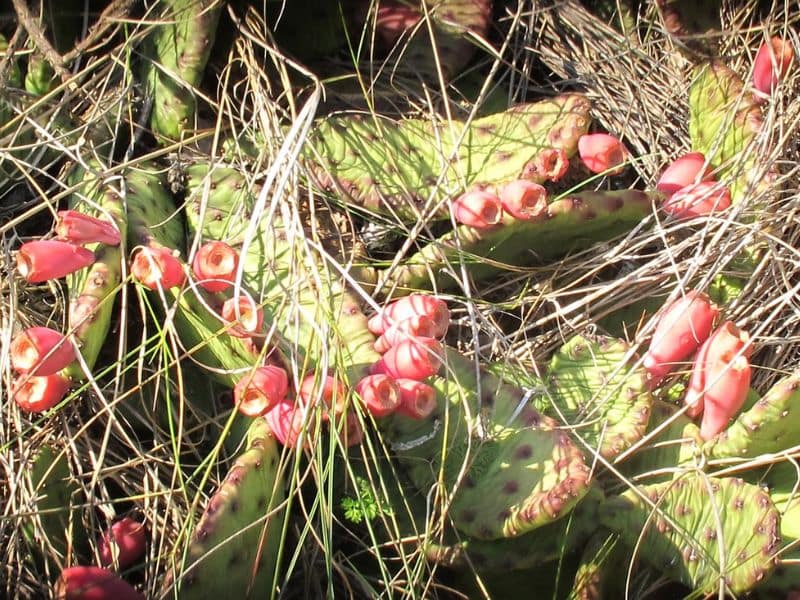
As to be expected, the prickly pear cactus is extremely drought tolerant, so when in doubt, water it less than you think it needs. In most areas, the typical rainfall will likely be enough for the cactus to thrive but if not, you can plan to water the plant every two to four weeks.
Soil
For the prickly pear to thrive, it needs to be planted in well-draining soil. Your best bet is a mixture that is dry, sandy, or gravelly, but it can also do well in a mixture that is primarily clay, so long as it drains very well and the soil does not retain much moisture. When it comes to pH levels, prickly pear isn’t especially high-maintenance and can thrive in a neutral-to-acidic mixture with a pH level of 6.0–7.5.
Fertilizing
When planted outdoors in garden soil, no fertilizer is needed. However, occasional feeding may be required indoors. Use a well-balanced fertilizer and let the plant tell you when it needs food—if its green color starts to pale or it doesn’t flower, it should be fed.
Pruning
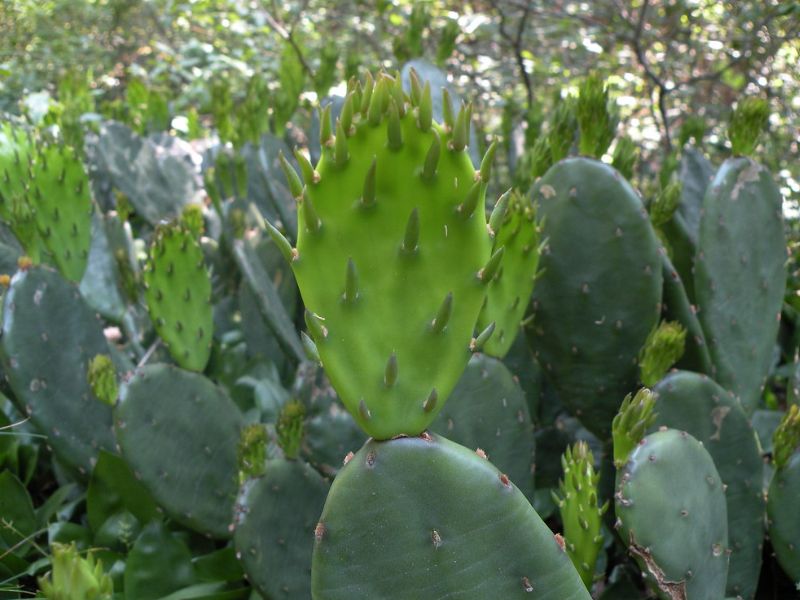
Pruning is not necessary for the prickly pear cactus, but you can remove a pad from the plant to help it maintain its proper shape. To do so, hold the pad with tongs or a hand covered in a thick glove; cut the pad at the base.
Propagation
While you can grow prickly pear from seeds, it can take up to three years to have a substantial plant, so propagation is often the preferred method. To do so, remove an individual pad from the mother cactus that’s at least six months old. Allow the cut end to “heal” for at least a week, or until it scabs over. At that point, you can plant the pad cut end down in a mixture of soil and sand. It will likely need to be supported on either side until it grows roots, so use stakes or other supports to hold it upright. After about a month, test for new roots by tugging on them gently—if the plant resists pulling, you have roots. If it comes loose, give it more time. You can water the cactus sporadically after it’s able to stand on its own.
Potting and Repotting
Prickly pear can be grown in pots until it becomes large enough to need space outdoors. To pot the prickly pear cactus, choose a pot with numerous drainage holes and a potting soil designed for succulents. For even better drainage, start with a layer of gravel at the bottom of the pot.
Start with a pot that is a few inches broader than the largest pad. The cactus can grow in this pot for a season or two; when it becomes rootbound, it’s time to move to a larger pot.
Overwintering
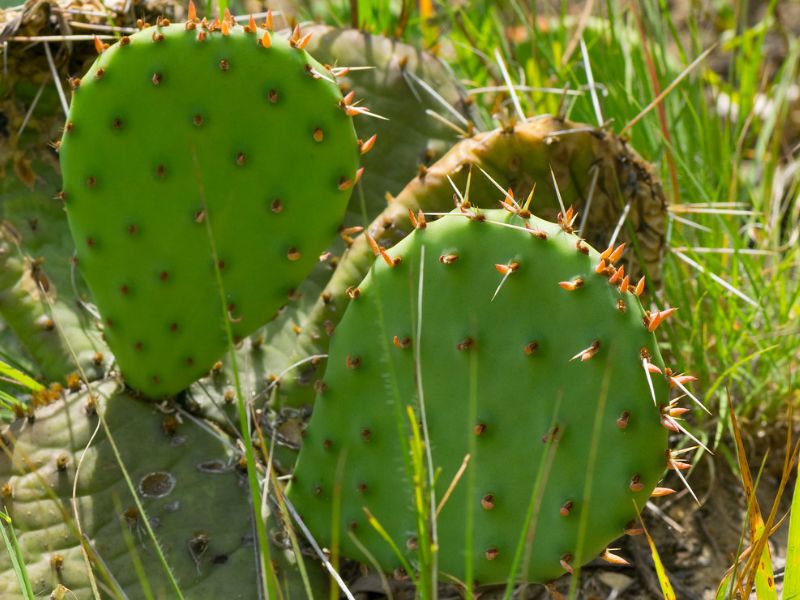
When growing a prickly pear cactus in a pot, make sure to bring it indoors during the winter. It should survive just fine in the typical atmosphere of a home during the wintertime. If the cacti are in the ground outside, protect them from the harshest cold with a generous layer of mulch around the bottom of the plant.
How to Get to Bloom
Prickly pear cactus might not bloom for the first few years of its life. To help it along in later years, fertilize once a month with a 5-10-10 fertilizer and keep it in the sunniest possible area. When it reaches the point of maturity and begins to set fruit, make a point of cutting the flowers back to about 10 per pad, to encourage plenty of room for growth of the fruit.
Pests and Diseases
The most common problem when growing a cactus is giving it too much water, which can cause its shallow, fibrous roots to rot and the cactus to collapse. They’re also susceptible to a variety of insect pests, including scale and mealybug, both of which can be treated with rubbing alcohol, neem oil, or, when very serious, a pesticide.
Prickly pear cactus can be afflicted by the phyllosticta fungus. Brought on by tiny spores that colonize the tissue of the cactus when the weather is particularly wet or humid, phyllosticta can eat lesions into the pads of the cactus, eventually causing large black spots that scab over. While not deadly to the prickly pear cactus, phyllosticta is very contagious and can easily spread to neighboring plants through heavy wind or rain. There is no effective treatment for phyllosticta—instead, it’s recommended that you dispose of infected pads or cacti to ensure the disease doesn’t spread.
III. Uses and Benefits
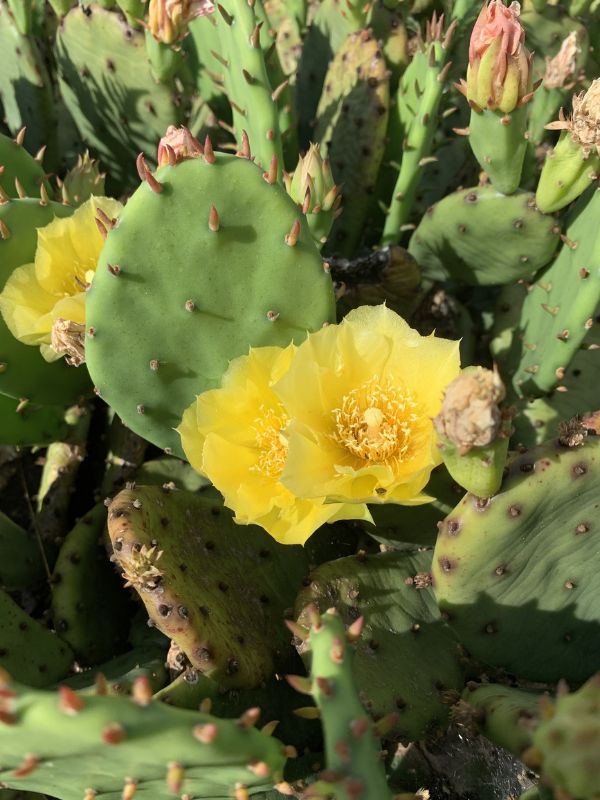
- Medicinal uses
Opuntia humifasa has also provided traditional medicine uses in Indian, American, Mexican, and Korean cultures. The stem produces an extract that is high in concentrations of polyphenols and flavonoids. It has also been found that Opuntia humifasa has been associated with endophytic fungi.
- Culinary uses
The fruits are edible, but have small spiny bristles. The pulp can be scooped and the seeds strained out to make syrup or jelly. The seeds can be briefly roasted and ground into meal. Young cactus segments can be roasted to remove spines, then peeled and sliced to be eaten like string beans; alternatively, they can be deep fried. The leafy segments can be peeled and chewed for emergency hydration.
IV. Harvesting and Storage
Most fruits of eastern prickly pear are edible. Pick the fruit when they turn red. Avoid food safety issues by confirming the species with experts. Wear gloves or use scissors and other tools to harvest.
V. Types of Prickly Pear Cactus
In addition to the eastern prickly pear, there are other varietals throughout the United States.
- Beavertail (Opuntia basilaris): This pink-flowered variety blooms in the spring and is found in native lands up to 8,000 feet of elevation.
- Englemann (Opuntia engelmannii): Known for deep red or purple fruits, this variety has wide-spaced spines.
- Mojave (Opuntia erinacea): The mature plant doesn’t offer much in the way of fruit, and grows best at over 3,500 feet of elevation.
- Santa Rita (Opuntia santa-rita): This striking variety offers pads of vibrant blue-gray or purple.
Find Where to Buy the Best Eastern Prickly Pear (Opuntia humifusa)

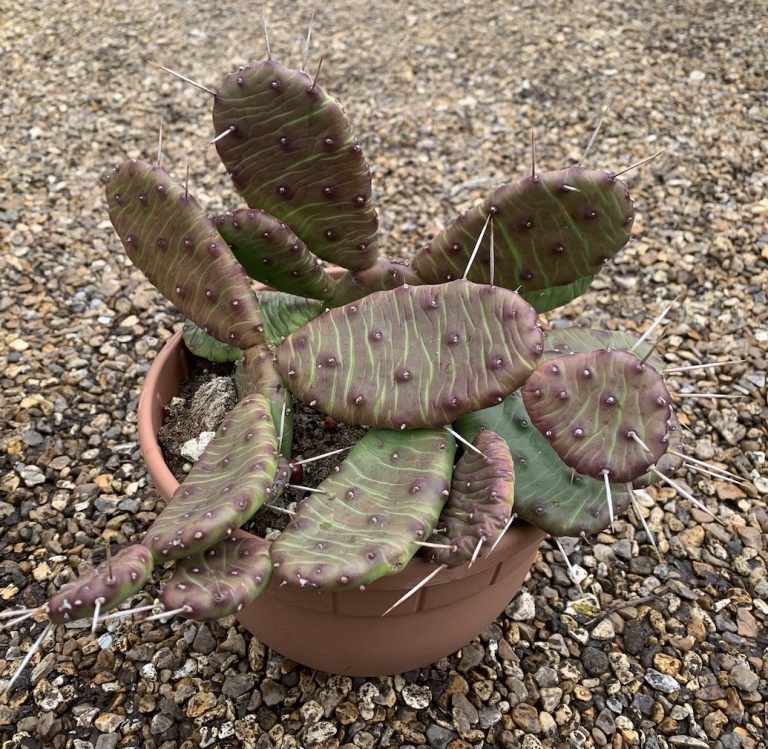

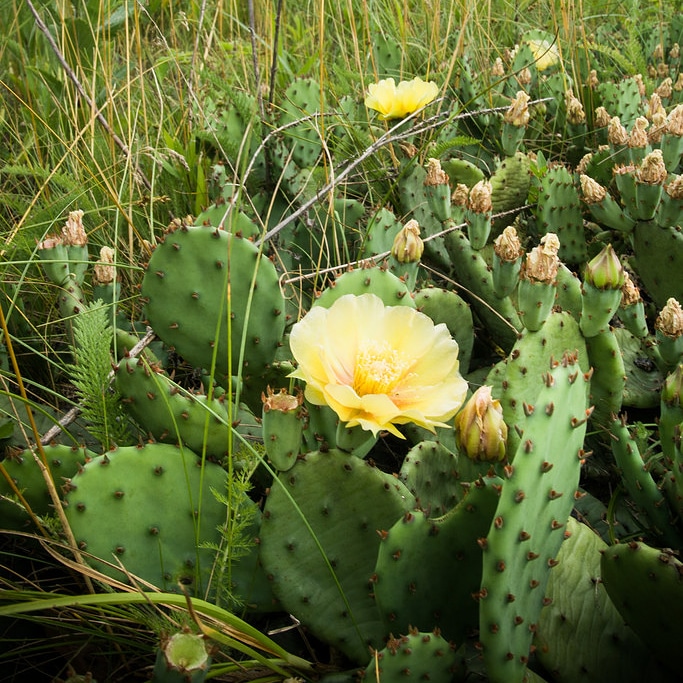





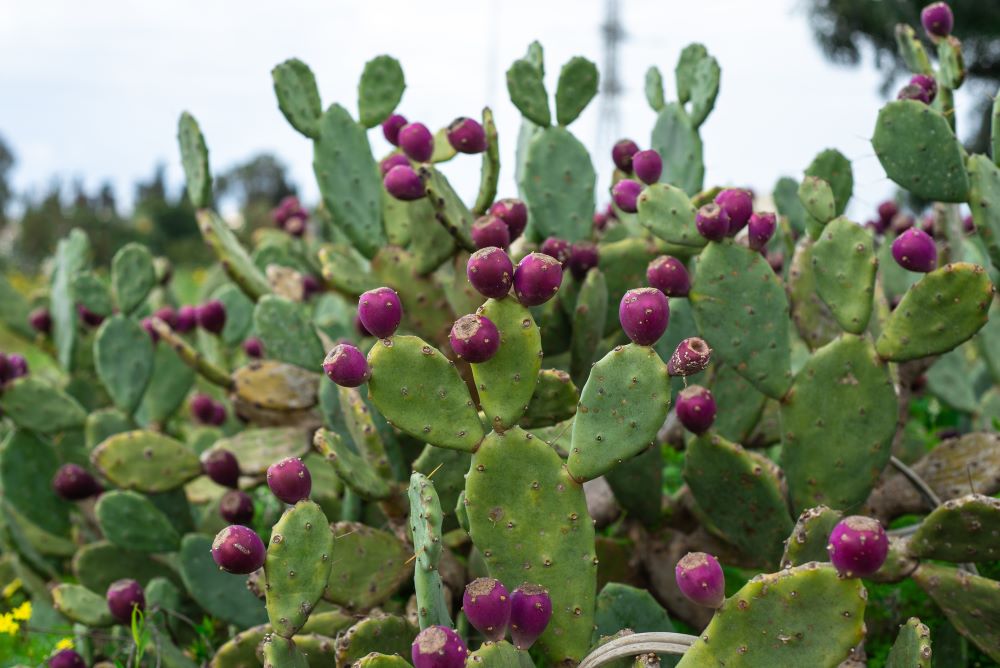








Leave a Reply